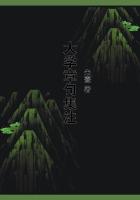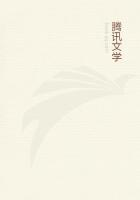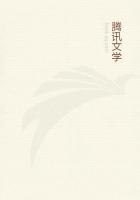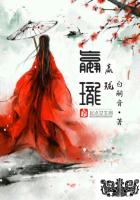Among the advocates of the western route was a Genoese mariner by the name of Cristoforo Colombo. He was the son of a wool merchant. He seems to have been a student at the University of Pavia where he specialised in mathematics and geometry. Then he took up his father's trade but soon we find him in Chios in the eastern Mediterranean travelling on business.
Thereafter we hear of voyages to England but whether he went north in search of wool or as the captain of a ship we do not know. In February of the year 1477, Colombo (if we are to believe his own words) visited Iceland, but very likely he only got as far as the Faroe Islands which are cold enough in February to be mistaken for Iceland by any one. Here Colombo met the descendants of those brave Norsemen who in the tenth century had settled in Greenland and who had visited America in the eleventh century, when Leif's vessel had been blown to the coast of Vineland, or Labrador.
What had become of those far western colonies no one knew. The American colony of Thorfinn Karlsefne, the husband of the widow of Leif's brother Thorstein, founded in the year 1003, had been discontinued three years later on account of the hostility of the Esquimaux. As for Greenland, not a word had been heard from the settlers since the year 1440.
Very likely the Greenlanders had all died of the Black Death. which had just killed half the people of Norway. However that might be, the tradition of a "vast land in the distant west" still survived among the people of the Faroe and Iceland, and Colombo must have heard of it. He gathered further information among the fishermen of the northern Scottish islands and then went to Portugal where he married the daughter of one of the captains who had served under Prince Henry the Navigator.
From that moment on (the year 1478) he devoted himself to the quest of the western route to the Indies. He sent his plans for such a voyage to the courts of Portugal and Spain.
The Portuguese, who felt certain that they possessed a monop- oly of the eastern route, would not listen to his plans. In Spain, Ferdinand of Aragon and Isabella of Castile, whose marriage in 1469 had made Spain into a single kingdom, were busy driving the Moors from their last stronghold, Granada.
They had no money for risky expeditions. They needed every peseta for their soldiers.
Few people were ever forced to fight as desperately for their ideas as this brave Italian. But the story of Colombo (or Colon or Columbus, as we call him,) is too well known to bear repeating. The Moors surrendered Granada on the second of January of the year 1492. In the month of April of the same year, Columbus signed a contract with the King and Queen of Spain. On Friday, the 3rd of August, he left Palos with three little ships and a crew of 88 men, many of whom were criminals who had been offered indemnity of punishment if they joined the expedition. At two o'clock in the morning of Friday, the 12th of October, Columbus discovered land. On the fourth of January of the year 1493, Columbus waved farewell to the 44 men of the little fortress of La Navidad (none of whom was ever again seen alive) and returned homeward.
By the middle of February he reached the Azores where the Portuguese threatened to throw him into gaol. On the fifteenth of March, 1493, the admiral reached Palos and together with his Indians (for he was convinced that he had discovered some outlying islands of the Indies and called the natives red Indians) he hastened to Barcelona to tell his faithful patrons that he had been successful and that the road to the gold and the silver of Cathay and Zipangu was at the disposal of their most Catholic Majesties.
Alas, Columbus never knew the truth. Towards the end of his life, on his fourth voyage, when he had touched the mainland of South America, he may have suspected that all was not well with his discovery. But he died in the firm belief that there was no solid continent between Europe and Asia and that he had found the direct route to China.
Meanwhile, the Portuguese, sticking to their eastern route, had been more fortunate. In the year 1498, Vasco da Gama had been able to reach the coast of Malabar and return safely to Lisbon with a cargo of spice. In the year 1502 he had repeated the visit. But along the western route, the work of exploration had been most disappointing. In 1497 and 1498 John and Sebastian Cabot had tried to find a passage to Japan but they had seen nothing but the snowbound coasts and the rocks of Newfoundland, which had first been sighted by the Northmen, five centuries before. Amerigo Vespucci, a Florentine who became the Pilot Major of Spain, and who gave his name to our continent, had explored the coast of Brazil, but had found not a trace of the Indies.
In the year 1513, seven years after the death of Columbus, the truth at last began to dawn upon the geographers of Europe. Vasco Nunez de Balboa had crossed the Isthmus of Panama, had climbed the famous peak in Darien, and had looked down upon a vast expanse of water which seemed to suggest the existence of another ocean.
Finally in the year 1519 a fleet of five small Spanish ships under command of the Portuguese navigator, Ferdinand de Magellan, sailed westward (and not eastward since that route, was absolutely in the hands of the Portuguese who allowed no competition) in search of the Spice Islands. Magellan crossed the Atlantic between Africa and Brazil and sailed southward.
He reached a narrow channel between the southernmost point of Patagonia, the "land of the people with the big feet," and the Fire Island (so named on account of a fire, the only sign of the existence of natives, which the sailors watched one night).


